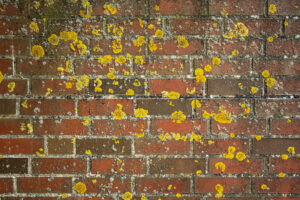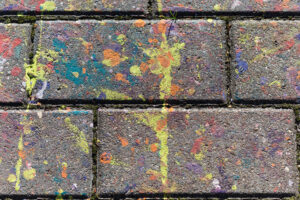
Lafayette 337-329-8445
New Orleans 504-229-2083

Lafayette 337-329-8445
New Orleans 504-229-2083

 The short answer is that it’s the white, hard substance that accumulates on stone surfaces (brick, stucco, concrete, etc). While generally harmless, it can indicate structural weaknesses.
The short answer is that it’s the white, hard substance that accumulates on stone surfaces (brick, stucco, concrete, etc). While generally harmless, it can indicate structural weaknesses.
The long answer is this: efflorescence is what happens as water moves through stone. Sometimes salts can hitchhike on the evaporating water. When the water does evaporate, the salts are left behind. Over time, so much salt accumulates that it creates a hard, white deposit.
It is a common issue with any type of stone; however, if the efflorescence is removed and returns quickly, you might have a deeper problem on your hands.
When water constantly is moving through your walls, it can weaken them. If you see excessive chipping or damage behind the efflorescence once you remove it, call a builder to take a look. More extreme measures may be required.
 This process is fairly simple. In most cases, all you need is a strong scrub brush and water. If this doesn’t do the trick, you can upgrade your efforts and use a pressure washer.
This process is fairly simple. In most cases, all you need is a strong scrub brush and water. If this doesn’t do the trick, you can upgrade your efforts and use a pressure washer.
Be careful though, as using too much pressure can chip your brick and open the pores. This will allow more moisture to get in, and the problem will only get worse.
The failure of both of these options means it’s time to bring in chemicals. Again, you can cause more harm than good so you must be careful. Always wear appropriate safety gear when handling chemicals.
The first thing you need to do is thoroughly soak the surface with water. This will prevent the surface from absorbing the chemical, as it will already be saturated with water – it cannot absorb anything else.
Then you can bring out the chemicals. You can use vinegar, citric or phosphoric acid. Make sure that you use a baking soda and water mixture to neutralize any remaining acid after you clean, remove, and rinse the surface.
Preventing efflorescence is an option, and you can do things like coat the surface in a sealer or paint that will prevent moisture from entering (see our blog on brick painting here). You can install a moisture barrier to prevent moisture from the ground. Essentially heavy-duty plastic sheeting under your slab and wall to keep water from moving into the surface from the earth.
Contact a commercial painter or builder if you suspect you have deeper damage from the efflorescence, or if you decide to go ahead with sealing/painting your stone surface.
Efflorescence may seem like a daunting issue, but with the right approach, it’s manageable. By understanding the causes, effects, and removal techniques, you can ensure your surfaces remain clean and vibrant. Regular maintenance and proactive measures can prevent future occurrences and preserve the beauty of your space.
If you encounter stubborn efflorescence or need professional help, JMA Painters is here to assist. Our expertise ensures effective treatment and long-lasting results. Contact us today to restore your surfaces and keep them looking their best!